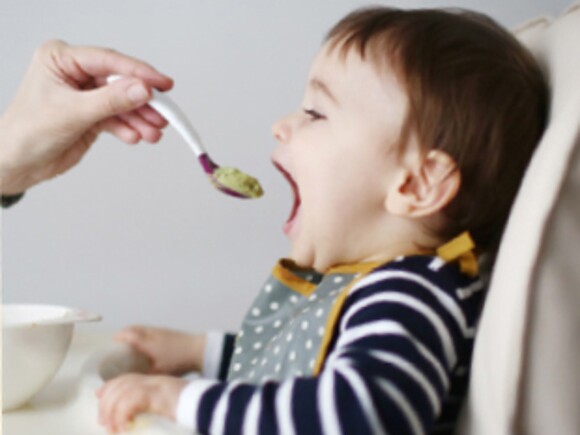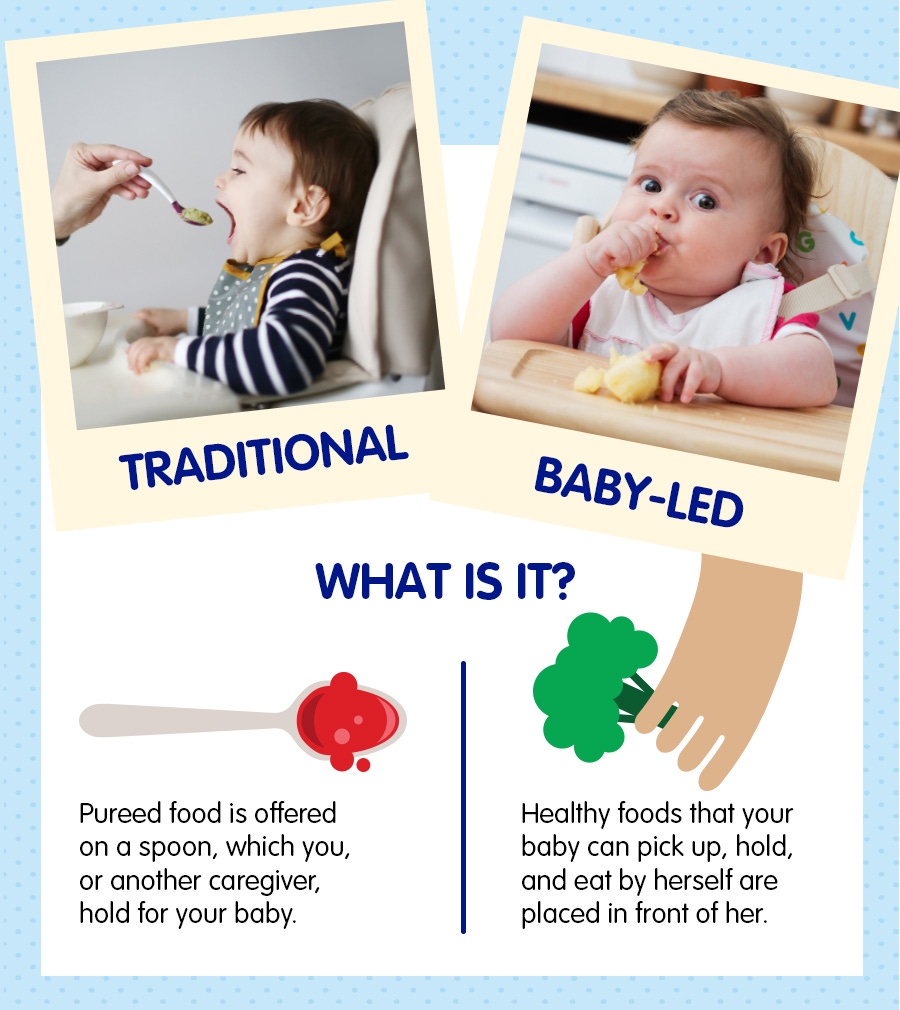
Getting started with solid foods: traditional and baby-led-weaning

What does a feeding expert say?
If you’re following the traditional method of starting with smooth purees, your baby may soon be able to manage thicker textures and mashed foods. “As your baby masters the mouth skills of purees, she can move on to thicker textures,” advises Sarah Smith-Simpson, PhD, Principal Scientist and Feeding Expert at Nestlé Nutrition in Michigan, USA. “She can then eat small, soft, cooked vegetables and mashed fruit when developmentally ready.”
Baby-led weaning may allow your baby to have more independence with eating at an early age. “Some studies suggest that it is also associated with better appetite regulation and less fussy eating in toddlers,” says Dr. Smith-Simpson.
What is your baby learning?
Introducing your baby to a variety of healthy foods is a gradual process. As with learning anything new, the more practice she gets at trying new foods, the better. Whether you are offering purees, finger foods, or a combination of the two, your baby is learning new skills. With every bite she is:
- accepting new tastes and textures
- independently choosing, from the healthy foods offered, what she wants to eat and how much, so she follows her own hunger and fullness cues
- eating in a social setting—being offered the same foods as the rest of the family, either as purees, mashed, or in bite-size pieces
- learning to eat from a spoon (if being offered purees)
- developing her pincer grip—picking up objects using her index finger and thumb (if being offered finger foods)
How can you help?
Starting to offer your baby her first solid foods, whether you choose the traditional method or baby-led weaning, is an exciting time, and an important milestone in your baby’s development. There are small steps you can take to make this process as simple as possible, promoting healthy eating for your baby now and in the future:
- recognize the signs and respond to your baby when she shows she’s hungry or full (for more on responsive feeding see Hungry or full? Nine faces of feeding)
- create a warm and nurturing environment for feeding times
- offer a variety of foods and textures
- offer fruits and vegetables at as many mealtimes and snack times as possible
- make sure every mouthful is full of nutrients, especially important vitamins and minerals (check out 5 key nutrients for your six to eight-month-old baby as a guide)
- continue to breastfeed—breast milk will still provide energy and nutrients for your baby
Sources
Alvisi P, Brusa S, Alboresi S et al. Recommendations on complementary feeding for healthy, full-term infants. Ital J Pediatr 2015; 41(36) doi: 10.1186/s13052-015-0143-5.
Brown A, Lee MD. Early influences on child satiety-responsiveness: the role of weaning style. Pediatr Obes 2015; 10(1):57-66.
Nicklaus S, Demonteil L, Tournier C. Modifying the texture of foods for infants and children. In: Modifying Food Texture, Volume 2. Elsevier, 2015: 187-222.
Taylor RW, Williams SM, Fangupo LJ et al. Effect of a baby-led approach to complementary feeding on infant growth and overweight. A randomized clinical trial. JAMA Pediatr 2017; 171(9):838-46. doi:10.1001/jamapediatrics.2017.1284.
Townsend E, Pitchford NJ. Baby knows best? The impact of weaning style on food preferences and body mass index in early childhood in a case-controlled sample. BMJ Open 2012; 2(1):e000298.